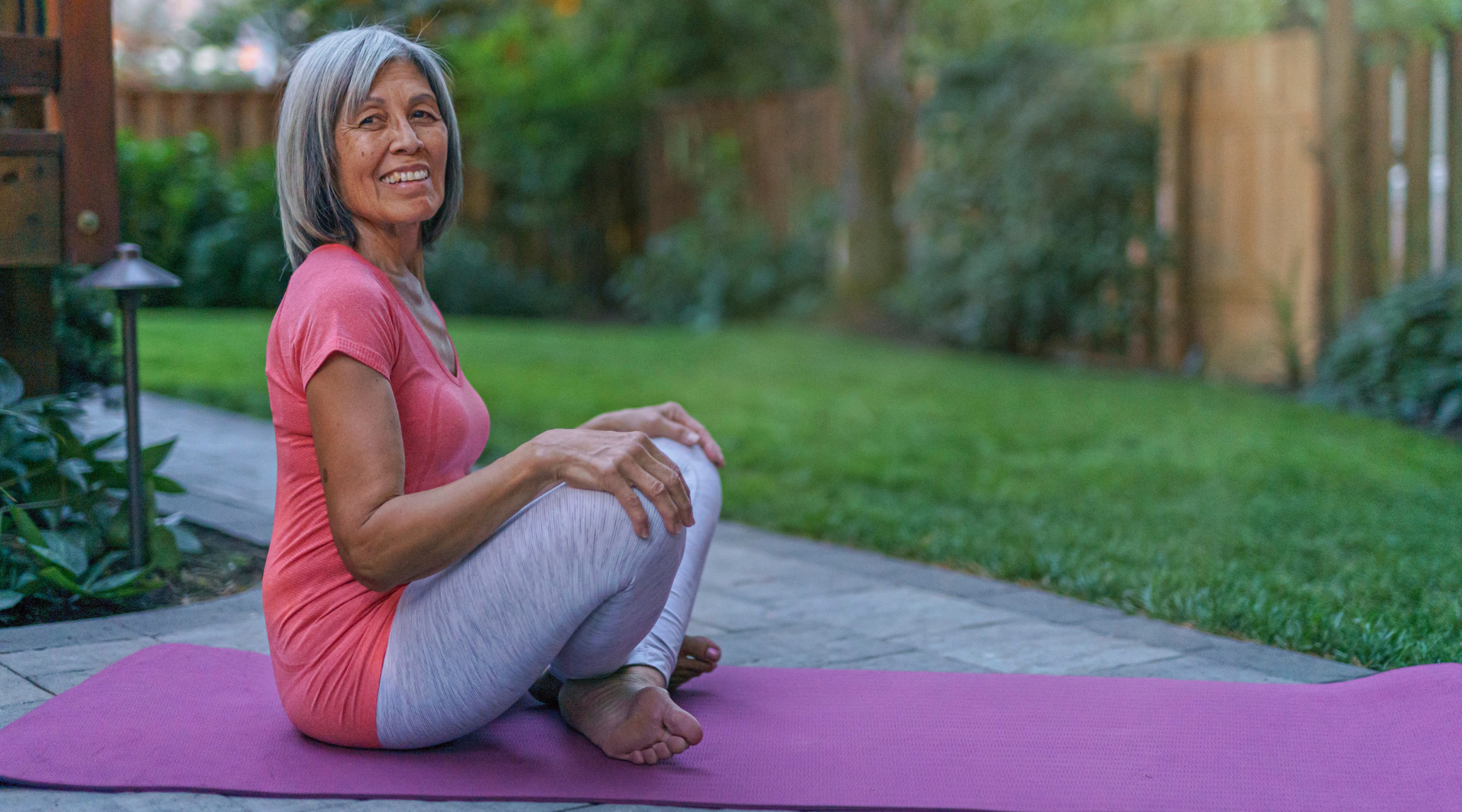Each week, OMRF Chief Medical Officer Dr. Judith James opens “Adam’s Journal” to answer a medical question from Adam Cohen, OMRF’s senior vice president & general counsel.
Adam’s Journal
As we often do when we get together, my sister and I recently found ourselves in a friendly competition. This one was to see if we could complete a test: lowering ourselves to the floor, legs crisscrossed, then standing back up, all without using our hands to brace us in any way.
Ali and I were trying because we’d both heard that particular exercise serves as a good predictor of longevity. But is it?
Dr. James Prescribes
The test was devised by a team of exercise and sports scientists, who published their work in the European Journal of Cardiovascular Prevention a little more than a decade ago.
The researchers enrolled 2,000 volunteers aged 51 to 80 and had them perform the test. They then followed the volunteers for an average of a little more than six years.
During that time, 159 of the research subjects died. Of that group, only two who’d done perfectly on the test had passed away. In addition, those who scored lowest (they’d used their hands the most) had died at more than five times the rate than those who’d done perfectly or used their hands minimally.
Now, before anyone starts worrying about their mortality – or feeling invincible – I’d urge readers not to over-interpret these results.
Obviously, strength and balance play a role in healthy aging, most notably in preventing falls, a leading cause of death in older people. And this test can serve as one measure of the loss of muscle and function in the aging process, known as sarcopenia.
However, there are a multitude of other variables that also influence lifespan, including cardiovascular, metabolic, cognitive and social factors.
Older adults’ performance in a range of other physical tests – involving push-ups, grip strength and walking speed – have also shown some correlation with mortality in future years.
Taken together with measures like blood pressure, cholesterol, body mass index and blood sugar levels, tests like this can help form a picture of a person’s overall health. But none should be read in isolation, nor should we attach too much significance to any single result.
–
Do you have a health query for Dr. James? Email contact@omrf.org and your question may be answered in a future column!



